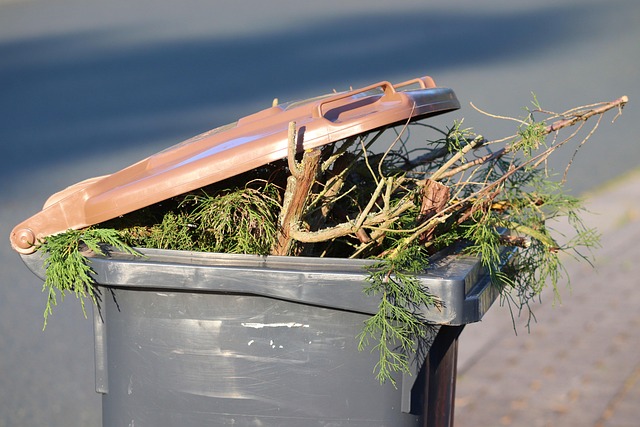In a world increasingly conscious of waste and its environmental impact, the humble kitchen bin is evolving into a powerful tool for sustainability. A modern composting device, often called a composter, transforms everyday food scraps—fruit peels, coffee grounds, vegetable trimmings—into nutrient‑rich compost that can revive gardens, reduce landfill burden, and close the loop on our food cycle. This article explores how an eco‑friendly composter works, what to look for when choosing one, and practical tips for maximizing its benefits in your home garden.
Why Composting Matters for the Planet and Your Garden
Food waste accounts for about 30% of all municipal solid waste in the United States, and in the EU it is comparable. When discarded, these scraps travel miles to landfills where they produce methane—a greenhouse gas 28 times more potent than carbon dioxide. By diverting scraps into a composting device, you cut methane emissions, conserve landfill space, and create a closed‑loop system that feeds back into the soil. For gardeners, compost is a living fertilizer that improves soil structure, enhances water retention, and supplies a balanced mix of macro and micronutrients. In short, every handful of kitchen scraps processed in a composter is a small act of climate stewardship and a big boost to plant health.
Types of Composting Devices for Every Lifestyle
Composting devices come in a range of shapes, sizes, and mechanisms, each suited to different living arrangements and composting preferences. Below are the most common types and their key characteristics.
- Mini Indoor Composters – Compact units with odor‑control lids, perfect for apartments or small kitchens. They often use a rotating drum or magnetic lid to aerate the material.
- Vertical or Barrel Composters – Cylindrical or rectangular containers that stack neatly on a counter or pantry shelf. They are usually made from food‑grade plastic and feature a simple flip‑over lid for turning.
- Biogas‑Ready Composters – Larger systems that produce a gas stream you can capture for cooking or heating. These require more space and a bit of technical know‑how.
- Compost Tumbler Machines – Motorized tumblers that rotate automatically, eliminating manual turning. Ideal for people who want low‑maintenance solutions.
- Outdoor Compost Pits – No‑frills, inexpensive pits dug into the garden. While they lack the convenience of a device, they can be combined with a simple lid to reduce odors and pests.
Choosing the right composter depends on your available space, how much time you’re willing to dedicate to turning, and whether you prefer a discreet indoor unit or a more robust outdoor system. Regardless of the model, a good composting device should be easy to clean, airtight enough to limit smells, and designed to encourage airflow.
Essential Features to Evaluate When Buying a Composting Device
With so many options on the market, it can be overwhelming to decide which composter fits your needs. Consider the following factors to narrow your choices and ensure long‑term success.
- Capacity – Measure the volume of scraps you generate weekly. A 10‑quart container is adequate for most households, while a 30‑quart model is better for larger families or hobby gardens.
- Aeration – Look for built‑in fans, perforated lids, or a tumbling mechanism. Good airflow prevents odor buildup and speeds up decomposition.
- Odor Control – Devices with tight seals or charcoal filters keep kitchen smells contained. A breathable lid that still seals when closed is ideal.
- Ease of Use – Features such as a quick‑release mechanism, clear layers, or a turn‑button can make composting feel effortless.
- Durability and Material – Food‑grade polypropylene or stainless steel reduces contamination and extends lifespan. Avoid cheap plastics that may leach chemicals into compost.
- Size and Placement – If you’re limited on counter space, a vertical model or a wall‑mounted composter might be the best fit.
- Maintenance Requirements – Some devices need periodic cleaning, while others come with removable trays that can be washed in the sink.
When evaluating a composting device, don’t forget to read reviews and test user experiences. A unit that performs well in a showroom might behave differently in everyday kitchen conditions.
Step‑by‑Step Guide to Using Your Composting Device
Using a composter can feel like a chore at first, but with a simple routine it becomes a natural part of kitchen life. Follow these steps to get the most out of your composting device.
- Start with a balanced mix – Combine “green” materials (fruit and vegetable scraps, coffee grounds, tea bags) with “brown” materials (dry leaves, shredded newspaper, cardboard). A good ratio is roughly 3:1 greens to browns.
- Chop or shred large pieces – Smaller chunks break down faster. A small kitchen shredder or a knife can help.
- Keep moisture balanced – The mix should feel like a wrung‑out sponge. Too wet and it smells; too dry and it stalls.
- Turn regularly – If your device doesn’t rotate automatically, turn the contents every 3–5 days. This aerates the pile and speeds decomposition.
- Monitor temperature and odor – A properly composting device should warm slightly but not burn. Any strong odor usually signals excess moisture or lack of airflow.
- Harvest when ready – After 4–6 weeks, the compost should darken, feel crumbly, and have a earthy scent. Remove it in bags or a mesh container for easy transport.
A small tip: place a shallow tray at the bottom of the device to catch liquids. These “liquors” can be diluted with water and used as a gentle fertilizer for your plants. Just be cautious about sodium or chlorides if using tap water.
Maintenance Tips to Keep Your Composting Device Working Smoothly
Even the best composting device needs routine care. Regular maintenance ensures odor control, extends the lifespan of your unit, and guarantees consistent compost quality. Here’s how to keep your device in top shape.
- Weekly Cleaning – Wipe down the interior and lid with a mild soap solution. Rinse and dry completely before next use.
- Check Seals and Filters – Inspect any rubber gaskets or charcoal filters for wear. Replace them annually or as needed.
- Clear Drainage – If your device has a drainage pipe or opening, flush it with warm water monthly to prevent mold buildup.
- Inspect for Pest Intrusion – Look for signs of rodents or insects. Adding a small amount of coffee grounds or placing a layer of dry newspaper can deter pests.
- Rotate or Turn Mechanism – If your composter uses a manual turn button, check for smooth operation. Lubricate moving parts with a food‑grade silicone spray if they feel stiff.
With these simple habits, your composting device will remain odor‑free, efficient, and ready to turn kitchen scraps into garden gold for years to come.
From Kitchen Scraps to Garden Gold: The Positive Impact on Your Plants
The finished product of a well‑run composting device—rich, dark, earthy compost—offers an unparalleled array of benefits to any garden. Unlike synthetic fertilizers that provide only a few nutrients, compost supplies a balanced mix of nitrogen, phosphorus, potassium, and trace elements, along with beneficial microbes that enhance soil structure.
Plants grown in composted soil typically show increased root depth, improved drought tolerance, and higher resistance to pests and diseases. The organic matter also promotes a healthy microbial ecosystem that competes with pathogens and helps break down complex organic molecules, releasing nutrients in a slow, steady form that plants can absorb over time.
Beyond the immediate growth benefits, compost improves soil porosity, allowing air and water to move freely. This reduces the need for irrigation, saves water, and lowers the risk of soil compaction that can stifle root development. In vegetable gardens, applying a thin layer of fresh compost before planting each season can significantly boost yields and flavor profiles.
Finally, composting reduces the need for commercial fertilizers, cutting both cost and the environmental footprint associated with their production and transport. By turning kitchen scraps into garden gold, you create a closed‑loop system that nourishes both the soil and the planet.
Conclusion: Making Composting a Lifestyle Choice
Incorporating a composting device into your household routine is a small adjustment with far‑reaching rewards. It turns everyday waste into a renewable resource, reduces greenhouse gas emissions, and enhances the vitality of your garden. Whether you choose a sleek indoor unit for a city apartment or a robust outdoor pit for a sprawling yard, the principles remain the same: balance moisture and airflow, maintain regular turning, and keep the system clean. Over time, the compost you create will become a staple of your gardening practices, proving that sustainability can be both simple and deeply rewarding.


